Pimpinella anisum
Lots of herbs – such as dill and fennel – have that gorgeous anise-like flavor, but anise is the OG.
A member of the Apiaceae family, this plant is usually the source of that anise flavor that we know and love in liqueurs, gum, candy, and baked goods.
Insects love this frilly herb, too. It’s a food source for several species of moths and butterflies, including black swallowtails and the wormwood pug.
While it’s most commonly grown for those tasty seeds, the leaves are delicious as well. They have a more subtle flavor than the seeds and remind me a bit of the fronds of fennel.

We link to vendors to help you find relevant products. If you buy from one of our links, we may earn a commission.
As if its versatility in the kitchen wasn’t enough to recommend it, the plant has also been shown to repel garden nasties like cabbage worms and root knot nematodes.
Kind of makes you wonder why not everyone is planting patches of this useful herb in their gardens. If you plan to add it to yours, here’s what we’ll discuss in the upcoming article:
What You’ll Learn
You are going to love this unfussy herb, and if you’ve never had fresh anise leaves before, you’re in for a treat. Let’s get started.
Cultivation and History
Anise (pronounced a-nəs or ə-ˈnēs) is native to the Middle East and northern Africa.
It is one of the oldest spices used by humans for food and medicine and was originally cultivated in Egypt, Greece, Rome, and the Middle East.
These days, Egypt and Spain grow most of the plants in the world used for making essential oils.
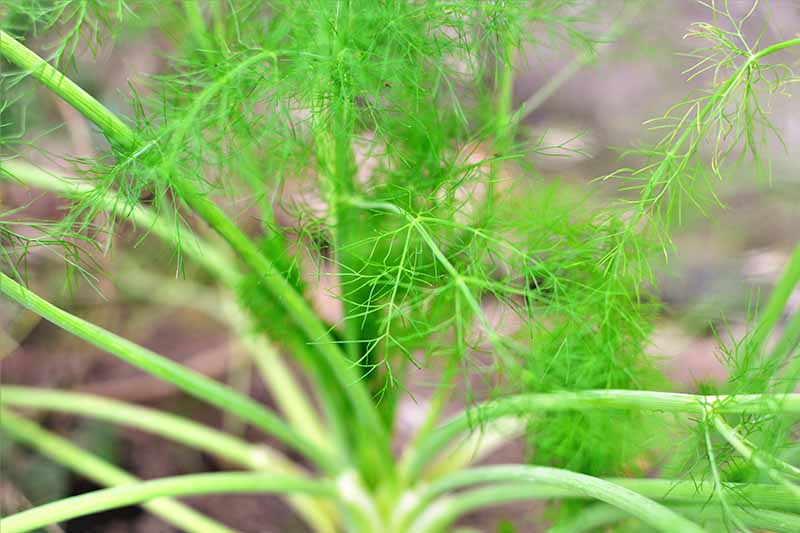
In ancient Crete and Egypt, it was burnt and inhaled in order to cure headaches. Today, many people go the less smokey route and use the plant’s essential oil on the skin to relieve headaches.
People across the globe have used and continue to use the seeds as a digestive aid, and they are thought to ease stomach issues and prevent flatulence.
Pliny the Elder said “It is generally thought that there is nothing in existence more beneficial to the abdomen and intestines than anise.”
That’s why you’ll often see little bowls of the seeds or mukhwas (a blend of candied anise, fennel, and sesame seeds) at Indian restaurants.
In Mexico, anise is used to flavor the traditional hot chocolate beverage known as champurrado.

In addition to attracting insects (and mice, but more on that later), the scent also attracts fish. Fishers use lures scented with anise to attract fish like catfish, bass, trout, and crappie.
It’s also used to make liqueurs like ouzo, and if you’ve ever noticed that ouzo has a cloudiness to it, that’s from the compound anethole that’s present in the plant. Anethole can’t be diluted in water.
The seeds also contain the compound estragole which, along with anethole, helps to provide that pungent anise flavor.
They also contain health-boosting coumarins and linoleic acid, with antibacterial, antifungal, and antioxidant properties.
In Ayurvedic medicine, practitioners use the seeds as a treatment for lung issues, colds, and coughs.
By the way, please, please, please don’t confuse anise (Pimpinella anisum) and star anise (Illicium verum).

A quick Google search will show you that people conflate these two plants all the time, but they’re nothing alike. Anise is a small green herb, while star anise plants are large, evergreen trees.
Beyond their name, the two plants share a flavor reminiscent of licorice. Star anise seed is sweet and licorice-like, almost like black licorice, with notes of cloves.
Anise has a more straightforward licorice-like flavor, though it is also quite sweet.
Hey, while we’re at it, keep in mind that anise hyssop (Agastache foeniculum) is a totally different plant, too. This mint relative is a lovely herb in its own right, but very different from anise.
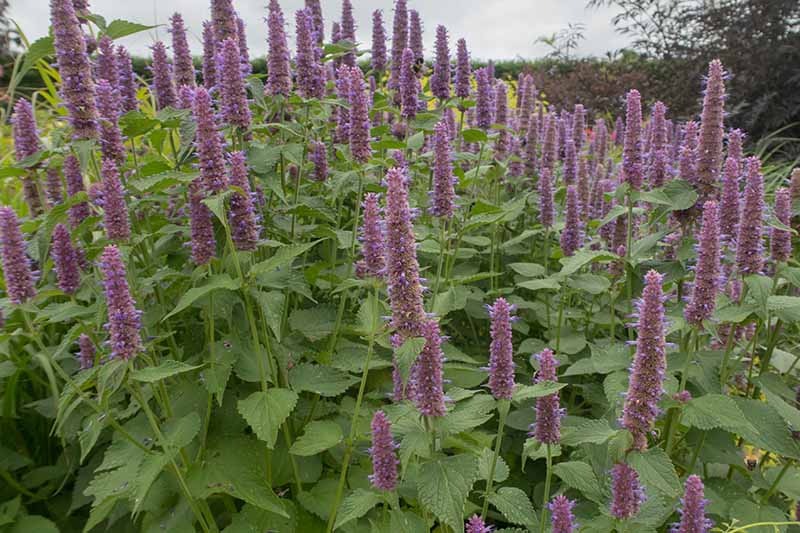
Some people call P. anisum “aniseed” to help differentiate it from the other two. It’s also sometimes called sweet cumin and saunf, which means anise in Hindi.
Heads up: fennel seeds are also called saunf in India, and many grocers in the US label aniseed as fennel seed.
How to Sow
These plants really don’t like being transplanted, so direct seeding is the best way to go. That said, if you don’t have enough warm days, you can start them inside and transplant them outdoors when the weather is right.
Before you plant in the garden, prepare an area by adding well-rotted compost to the soil if you don’t already have loose, rich, loamy soil.
Compost fixes both sandy and clay soil, and it’s a good solution if you don’t naturally have the type of soil anise prefers.
This herb prefers average soil with a pH somewhere between 6.0 and 7.5. For reference, most garden soil hangs out right around 6.0 to 7.0.
Not sure what you have? To begin, you’ll need to test your soil’s pH level. You can do that with a simple meter or take a soil sample and send it in to a lab.
Then, add some granular sulfur according to the manufacturer’s recommendations to make your soil more acidic, or add lime according to the manufacturer’s directions to make it more alkaline.
You’ve prepped the soil, and now it’s time to put those seeds into the ground. It needs to be about 70°F before the seeds will germinate. You can put them in the ground sooner, but they won’t start germinating until things warm up.
Plant the seeds 1/8 inch deep and 12 inches apart, and water until the soil feels like a well wrung-out sponge. Keep the soil moist as the seeds germinate.
So long as the soil temps are right, germination takes about 14 days.
Now, I know I said you shouldn’t transplant anise, but the herb does need a full 120 days of warm, sunny days to produce seeds.
If you don’t live in a climate that can provide that, you can start the seeds indoors in compostable pots and then plant them out in the garden.
Just expect some of your starts to bite the dust, and start a few extra to account for this. I’ve had great success planting this way, despite the common wisdom about never transplanting anise.
Remember, it needs to be warm for the seeds to germinate, so you may want to break out the heat mats.
Buy yourself some three-inch peat or manure pots. I love CowPots because they’re completely biodegradable and they don’t use up a renewable resource like peat (they’re made of cow poop!).
Plus, instead of removing the seedling from its pot to transplant, you just put the whole pot in the ground.
I buy CowPots in bulk because they’re so handy. If you want to pick up some for yourself, Arbico Organics carries them in packs of 12, 400, or 1176. Guess which I buy?
Fill the pots with a seed starting mixture to half an inch from the top. Plant two seeds near the center in each pot and cover with 1/8 inch of soil.
Put the plants in a warm area with indirect light. Once the seedlings emerge, put them under a grow light or near a window with at least six hours of light exposure per day.
If the seedlings don’t receive enough light they’ll grow leggy and weak, and they won’t transplant well.
Once the seedlings have grown an inch or two, pull up the less robust of the two seedlings from each pot. (It’s a ruthless business, gardening.)
Once the plant is about four inches tall, it’s ready to go into the garden. Harden it off for a week by bringing it outside to a protected area for an hour and then placing it back in its usual spot.
The next day, bring it out for two hours and then back in again, three hours on the third day, and so on. After a week, it’s time to plant.
How to Grow
Give plants rich, loose, loamy, well-drained soil. Overly sandy or overly clay soil isn’t ideal.
This plant grows as an annual in USDA Hardiness Zones 4 through 10 as annual, but that doesn’t mean you’ll be able to produce seeds in all of these areas.
Anise needs long, sunny days with temperatures consistently between 45 and 75°F (though a little hotter won’t hurt) for the seeds to ripen completely.
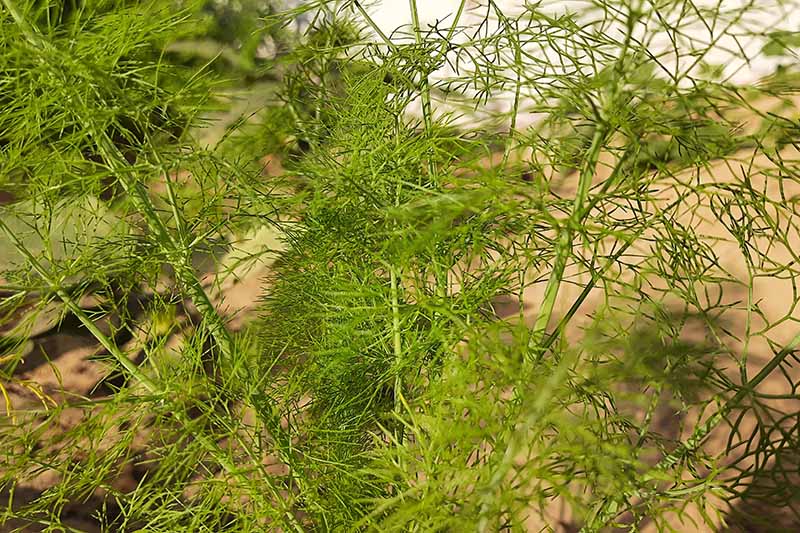
I live in Zone 9, but sadly, anise doesn’t grow well here in western Oregon. It simply isn’t consistently warm and sunny enough most years for the plants to produce lots of seeds. But many areas of the midwest and the central Eastern seaboard are just right.
Gardeners in places like California, Texas, Utah, and Arizona can also do well, but growers there might want to provide a little bit of afternoon shade using shade cloths if the weather creeps into the high 90s or above.
Otherwise, if you put this plant in even partial sun, you won’t grow seeds. You can still enjoy the leaves, though.
By the way, once the plant does go to seed, it’s time to pull it and toss it in the compost pile after you harvest all the seeds. It won’t come back, but you can leave a few seed heads in place so that the plant can self-sow.
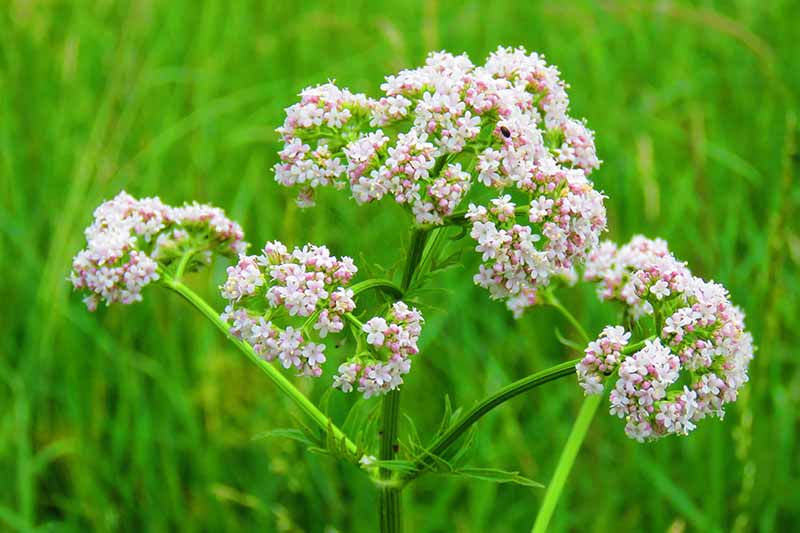
Young anise likes a good bit of moisture. Keep the soil moist and don’t let it dry out. How wet should the soil be? Stick your finger into the top inch. The earth should feel like a sponge that you have wrung out thoroughly.
Plants can tolerate short periods of drought, but don’t let the soil become too dry. A little compost mulch on the surface of the soil can help retain moisture.
Once plants reach their mature height, you can let the top inch of soil dry out between waterings.
During the growing season, this herb doesn’t need a ton of fertilizer. A side dressing of compost in the early summer is plenty.
Growing Tips
- Plants need well-drained, loose, rich soil.
- Side dress with compost in the early summer.
- Keep soil evenly moist when plants are young.
Maintenance
As the plant is growing, you might find that the seeds, which are technically the fruits of the plant, become heavy enough that the stems fall over.
If that happens, lower a tomato cage over the plant to prop the heads up, or tie the stalks to a support.

Plants don’t need pruning, but you can thin the foliage if it becomes overly crowded. The easiest way to keep on top of things is to simply snip off a stem here and there and use it in the kitchen as needed.
Managing Pests and Disease
Anise is a multi-purpose plant. It repels certain awful pests such as spider mites and cabbage worms. It also attracts beneficial parasitoid wasps, bees, moths, and black swallowtail butterflies.

There have also been studies showing that anise may help to repel nematodes, which makes them a useful companion plant for plants that are impacted by harmful nematodes, such as tomatoes.
Herbivores
Most herbivores seem to ignore this fragrant herb, but mice like anise… a lot.
Mice
This herb may repel a lot of pests, but mice aren’t one of them. The little rodents are attracted to the smell. In fact, the Old Farmer’s Almanac suggests rubbing anise oil on the cheese in a mousetrap to attract mice.
They go for the seeds rather than the leaves, so as long as you keep the seed heads off the ground and harvest your seeds when they’re ready, you shouldn’t have to worry much.
Just be sure to dry and store the seeds somewhere the mice can’t reach them.
Insects
Insects not only can kill your plants, but they can spread disease all around your garden. Try to prevent infestations when you can, and if this fails, try to get rid of them as quickly as possible.
Aphids
Aphids are the worst, not because they cause extreme damage, but because they are so common. Aphids like anise so much that the plant is often recommended as a trap crop to lure aphids away from other plants.
While a variety of different species of aphid will nibble on anise, the willow-carrot aphid (Cavariella aegopodii) is the most common visitor. This pest feeds on plants in the Apiaceae family, including carrots and parsnips.
These soft-bodied insects are green or yellow and about one and a half to three millimeters long. Our guide to getting rid of aphids can help you deal with this oh-so-common garden foe.
Cutworms
Cutworms are the larvae of several different types of moths. The most common on anise are Agrotis spp., Peridroma saucia, and Nephelodes minians.
While they range in color from beige to nearly black, the one thing they all have in common is that they’ll curl up into a “c” shape if you prod them.
The smooth, one or two-inch worms chew through the stems of plants during the night, toppling them over. They like to hide in garden debris during the day, so if you brush away dead leaves and spot one, grab it and crush it or drown it in soapy water.
You should also gently till the soil around plants every few days during the spring, to expose them.
The most effective strategy is to erect a barrier to prevent these worms from reaching the stems in the first place.
The easiest way to do this is to take a toilet paper roll (or cut a paper towel roll in half) and cut it down the length so that you can open it.
Put this around the stem of your anise plant, sinking the base an inch into the soil and taking care to close the roll completely.
Eventually, this will disintegrate into the soil, but by the time it does, cutworms are usually done for the season. If the barrier makes it through to late spring, you’re good.
See our guide to cutworm identification and management for more details.
Slugs and Snails
There’s a rumor out there that slugs and snails avoid strong-smelling plants like anise. Don’t listen to this. Slug and snails will devour young plants.
Head over to our excellent guide (if I do say so myself) on dealing with slugs to learn how to get these pests under control.
Disease
Anise is generally healthy, but there are a few problems that you’ll commonly encounter.
Downy Mildew
Downy mildew is incredibly common, and most gardeners will see it at some point. It’s caused by oomycetes in the Peronosporaceae family.
You might notice yellow or white patches on the top of the herb’s leaves, and a cotton-like growth on the underside. Foliage may eventually turn brown and die.
It favors moist conditions and cool temps below 65°F.
To address it, the first step is to improve air circulation. That means planting at an appropriate distance and pruning back anise leaves if they become too crowded.
Next, always be sure to water at the soil level. If you can, water in the morning instead of later in the day, and avoid spraying the foliage.
A weekly spray of neem oil can help control it, or a weekly application of a product containing hydrogen peroxide, such as BioSafe’s Disease Control RTU.
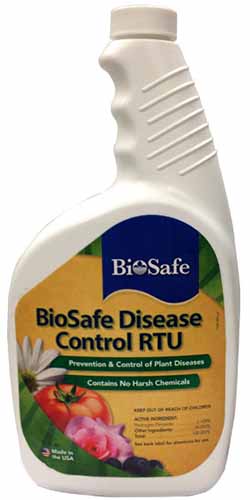
Arbico Organics carries the latter, which is a handy product to keep around, since it treats a number of different issues (including the one we’ll talk about next).
Powdery Mildew
Powdery mildew is another common issue. This one is caused on anise by the fungus Erisyphe heraclei and it thrives in warm, dry climates.
You’ll usually see it in the summertime. The leaves of your herbs will be covered in a powdery substance and the foliage may eventually turn yellow and become distorted.
To avoid it, don’t over fertilize, and water at the soil level.
Trim away any infected leaves and maintain good air circulation by planting at an appropriate distance, and pruning away foliage that is overly crowded.
As with downy mildew, use neem oil or a product containing hydrogen peroxide every two weeks when symptoms are present. You can also spray in advance of an infection if it tends to recur in your garden every year.
Harvesting
Harvest the leaves at any time. Just be sure to leave at least half of the foliage behind if you want robust seed heads. The leaves don’t store well, so use them right away.
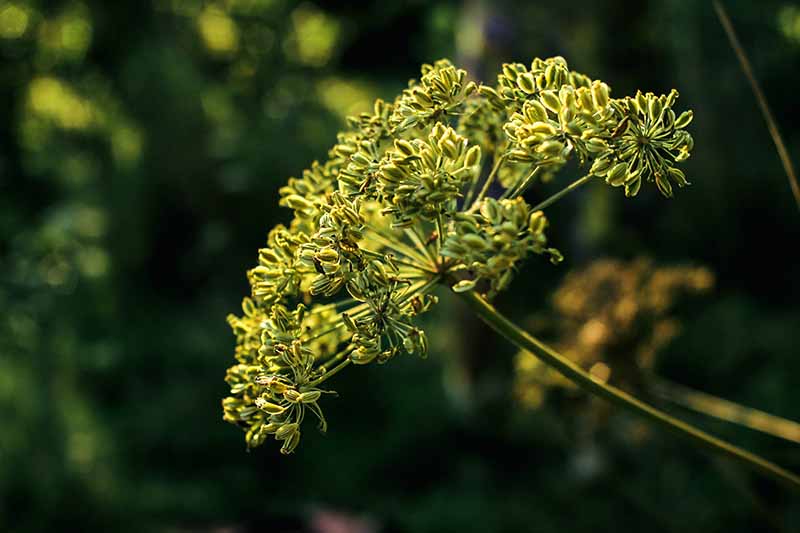
Cut the seed heads when the seeds have fully developed and turn from green to gray. Tie them in bundles and insert into a large paper bag with air holes poked into the sides.
Let the seeds dry and fall into the bag. You might need to shake the heads a little after a week or so to knock the remaining seeds free.
You might want to leave a few flowerheads on the plant so that it will self-sow and return next year.
This might be a good time to mention that if your plant has returned on its own by self-seeding, be absolutely sure you know what you’re harvesting. Anise looks a lot like some other umbel-flowered plants that are poisonous.
Preserving
Toast the seeds after harvesting by tossing them in a dry pan on the stovetop on medium heat. Keep the seeds moving by shaking the pan or stirring frequently for about five minutes. Now they’re ready to use in your recipes.
Either toasted or left raw, store them in a sealed jar in a cool, dark spot for up to a year. Note that toasted seeds can’t be used to germinate new plants.
Recipes and Cooking Ideas
Don’t grind up the seeds until you’re ready to use the spice. The ground seeds lose flavor pretty quickly. You can also use the seeds whole.
I like to lightly toast the seeds for a few seconds in a dry skillet before adding some fat and vegetables like carrots or beets. The whole seeds are delicious baked into bread or used in meat marinades.
Use ground anise to make a fruit salad by mixing a tablespoon of it with two cups of water, one cup of sugar, and 1/4 cup orange juice.
Toss with 12 cups of whatever fruit you like. A mix of melon, grapes, oranges, and strawberries is particularly nice.

Ras el hanout is a traditional Moroccan spice blend that can contain as many as fifty different spices, but it almost always has anise. Try making your own at home! You can read about it on our sister site, Foodal.
Make a tasty tea by lightly crushing a teaspoon of seeds and putting them in a tea diffuser. Place in a cup of hot water and steep for 15 minutes.
Or if you want to bring anise to your morning coffee routine, Foodal also has a great recipe for anise biscotti.
Now it’s time for dessert! Anise is often used to make candy, but I think it really shines in cookies. I like to add the powder to sugar cookie dough and people always rave about it.
Use Foodal’s sugar cookie base and add a teaspoon of ground anise.
Finally, don’t forget the leaves. You can use them to make pesto, in salads, or as a topping for pasta or soup. Try them with fish as well, or anywhere that you might typically use fennel.
Quick Reference Growing Guide
| Plant Type: | Annual herb | Tolerance: | Short periods of drought |
| Native to: | Middle East, northern Africa | Maintenance: | Low |
| Hardiness (USDA Zone): | 7-10 | Soil Type: | Rich, loose, loamy |
| Season: | Summer, fall | Soil pH: | 6.0-7.0 |
| Exposure: | Full sun | Soil Drainage: | Well-draining |
| Time to Maturity: | 120 days (seeds) | Attracts: | Butterflies, moths, parasitoid wasps |
| Spacing: | 12 inches | Companion Planting: | Brassicas, cilantro, cucumber, eggplant, tomatoes |
| Planting Depth: | 1/8 inch (seeds) | Avoid Planting With: | Drought-loving herbs like lavender, rosemary, sage |
| Height: | Up to 3 feet | Order: | Apiales |
| Spread: | 18 inches | Family: | Apiaceae |
| Water Needs: | Moderate to low, depending on age | Genus: | Pimpinella |
| Common Pests and Disease: | Mice; Aphids, cutworms, slugs, snails; Downy mildew, powdery mildew | Species: | Anisum |
Give This Uncommon Herb a Spot In Your Garden
Who can resist a plant that drives away bad bugs, brings in the good, amps up your meals, and doesn’t demand much from you while it’s doing it?

I want to hear all the details about your own adventures in Aniseland. How did you end up using your leaves and seeds? Share with us in the comments section below!
If this guide helped you become a master of all things anise, you might want to pick a new plant to tackle. If so, we have some other articles you might want to check out featuring plants from the Apiaceae (umbellifer) family to read next:

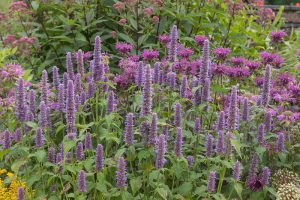


Excellent source of information to your readers, Ms. Lofgren. Personally, I love your careful and well described detailed love to Anise and Anise seeds. Thank you very much.
Thank you for the kind words! Glad to hear it was useful.